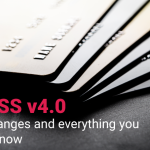
Indeed, mobile applications have become an integral part of the digitally interacting world. These applications not only store sensitive and personal information but also perform many of the most critical activities for today`s user. At the same time, they are easy targets for attackers. Developers are often seen carrying the amulet of guarding mobile applications from threats, vulnerabilities, and countermeasures.
This guide highlights different areas, such as the need for mobile app security, types of vulnerabilities developers must be aware of, and how some frameworks, such as OWASP MASVS, MSTG, and MASWE, may benefit the development process in terms of security.
Mobile App Security: A Prerequisite
Mobile applications run in environments with potential threats ranging from insecure networks to unscrupulous hackers willing to compromise an application’s integrity. Omission of addressing such threats could translate into data breaches, loss of compliance with regulatory statutes, and loss of user trust.
The solid ground for security was understanding the attack surface, which is a collection of points where an attacker could interact with your app. This helps you identify and minimize the surface to secure your app against those threats.
Dissecting the attack surface of a mobile app.
What is an attack surface for a specific application? Potentially exploitable threats can be divided according to types, which include the following:
- Data Storage: The location in which user and application-specific data are stored. For instance, if an external storage device keeps a piece of sensitive data, it could be exposed if adequate encryption is not exercised.
- Cryptography: Compromised implementation could lead to sensitive information being decrypted or compromised even more easily.
- Authentication: Weak OAuth implementations could compromise authentication methods that facilitate unauthorized access.
- Network Security: Preventing unauthorized data transmissions would place apps at an increased risk of MITM (man-in-the-middle) attacks during data transmissions.
- Platform Interaction: Security vulnerabilities could be introduced with improper handling of permissions or integration with the operating system.
- Privacy Issues: The regulations needed to be followed in using sensitive data such as having access to the camera or microphone include things like GDPR.
- Code Quality and Strength: Bad coding practices and lack of obfuscation make it easier for an attacker to reverse engineer the application.
Developers need to address the different potential areas and implement security mechanisms in them completely to lock down an application.
Vulnerabilities Common in Mobile Applications
How familiar are developers with what their applications are facing from attackers? Well enough to secure their apps more effectively. Consider the examples below:
- Hardcoded Secrets: Usually refers to embedding the sensitive keys or tokens within the app code and can be extracted by attackers easily.
- Insecure Cryptography: An example of this would be employing old algorithms or weak random number generators.
- Sensitive Data External Storage: Leaving the unencrypted data in paths accessible by other apps or by users.
- Less Than Sufficient Root/Jailbreak Detection: Allowing such applications to run in compromised devices without preventing such risks.
These vulnerabilities highlight the importance of extensive testing and the observance of security standards in the complete development life cycle.
OWASP Frameworks: MASVS, MASWE, & MSTG
OWASP provides comprehensive frameworks for systematic mobile application security development. The following few excerpts illustrate how they might assist you:
-
MASVS (Mobile Application Security Verification Standard)
The MASVS is a checklist for all the security requirements one should aim for in any application; it is a high-level set of goals, such as secure authentication or appropriate data storage and encryption practices. It provides the essential guide for developers as they benchmark app design against common threats.
-
Mobile Application Security Testing Guide (MSTG)
The detailed MSTA manual goes along with the MASVS by providing the security testing process through guidelines like tested:
How to carry out static and dynamic analysis.
Ways you can test data storage, network communications, and cryptography.
So much so that the MSTG converts the “what to do” of the MASVS into “how to do it.” -
Mobile Application Security and Verification Expert (MASWE)
MASWE is a certification that proves knowledge in the field of mobile app security. Professionals trained under MASWE will be qualified and well prepared to adopt MASVS and MSTG methodologies in practice and will therefore be of great value to their security-minded development teams.
| OWASP Mobile Top 10 Vulnerability | MASVS Category | MASWE Reference | MSTG Reference |
| M1: Improper Platform Usage | Platform Interaction (MASVS-P) | MASWE-1.2.3: Improper Use of Platform Features | MSTG-PLATFORM-1: Verify correct use of platform APIs |
| M2: Insecure Data Storage | Data Storage (MASVS-S) | MASWE-1.1.1: Storing Sensitive Data in Plaintext | MSTG-STORAGE-1: Ensure data is encrypted in storage |
| M3: Insecure Communication | Network (MASVS-N) | MASWE-1.3.2: Weak or No Network Encryption | MSTG-NETWORK-1: Ensure communication is encrypted |
| M4: Insecure Authentication | Authentication (MASVS-A) | MASWE-1.5.2: Flawed Authentication Mechanisms | MSTG-AUTH-1: Test authentication mechanisms for flaws |
| M5: Insufficient Cryptography | Cryptography (MASVS-C) | MASWE-1.4.3: Weak or Deprecated Cryptographic Algorithms | MSTG-CRYPTO-1: Use secure cryptographic practices |
| M6: Insecure Authorization | Authorization (MASVS-B) | MASWE-1.5.3: Insufficient Access Control | MSTG-AUTHZ-1: Verify authorization mechanisms |
| M7: Client Code Tampering | Resilience (MASVS-R) | MASWE-1.6.5: Lack of Protection Against Tampering | MSTG-RESILIENCE-7: Implement anti-tampering mechanisms |
| M8: Code Reverse Engineering | Resilience (MASVS-R) | MASWE-1.6.2: Weak Reverse Engineering Protections | MSTG-RESILIENCE-4: Apply code obfuscation and anti-reverse engineering techniques |
| M9: Improper Session Handling | Session Management (MASVS-D) | MASWE-1.5.5: Session Token Leakage | MSTG-SESSION-1: Test for session-related vulnerabilities |
| M10: Lack of Binary Protections | Resilience (MASVS-R) | MASWE-1.6.6: Absence of Binary Protections | MSTG-RESILIENCE-6: Implement binary protection mechanisms |
How These Frameworks Work Together
The security needs are set out in MASVS.
MSTG provides the specific steps to achieve those goals.
MASWE certifies individuals who can perform those measures in an effective way.
With these frameworks, developers would be able to secure their apps against tough threats, while also remaining open to newer and emerging threats.
Building Secure Applications: An Appeal to Developers
The first line of defense between the user and his data is the developer thus the steps to securing an application therefore are:
- Regularly assess your app’s attack surface and the areas that are most exposed.
- Adhere to the principles specified in best practices for storage, cryptography, and authentication.
- Utilize the frameworks such as MASVS and MSTG to standardize your approach.
- Always test and tweak how the security mechanisms are in place for your app.
Mobile security is more dynamic thus developers need to learn and be proactive. It is simply because you have embedded protection into the development lifecycle and not only do you protect the user but also make the app more robust and trustworthy.
Securing mobile applications is not just a necessity but a responsibility as well. Start now by knowing the OWASP standards and adopting an orderly, intelligent approach towards mobile app security.





